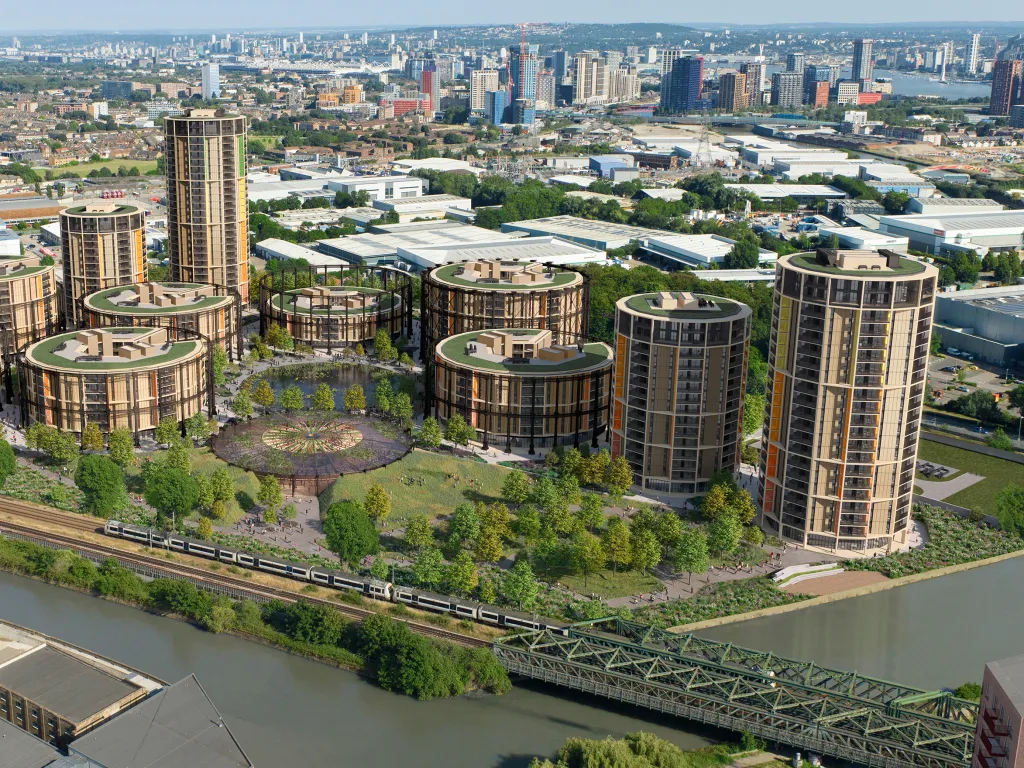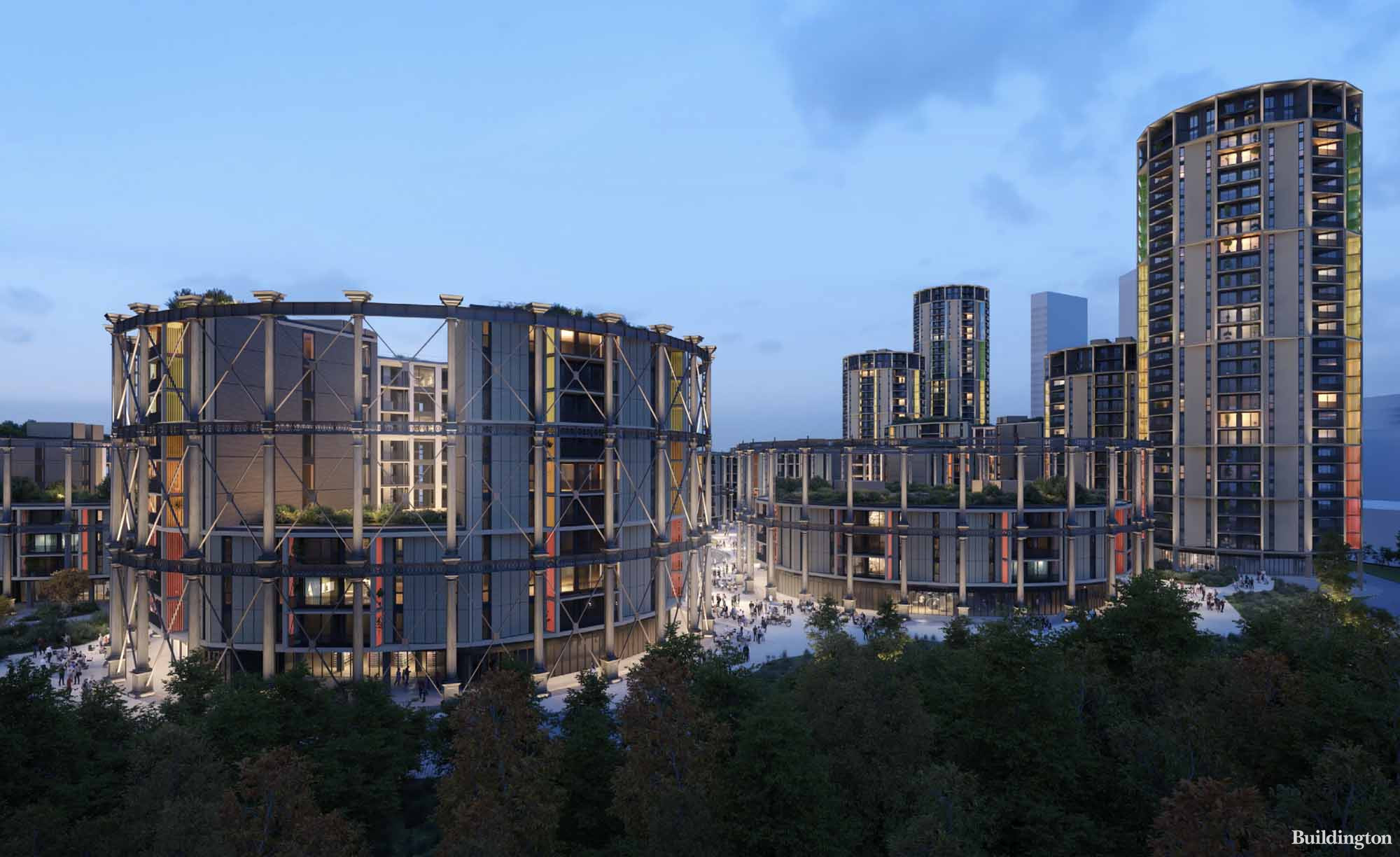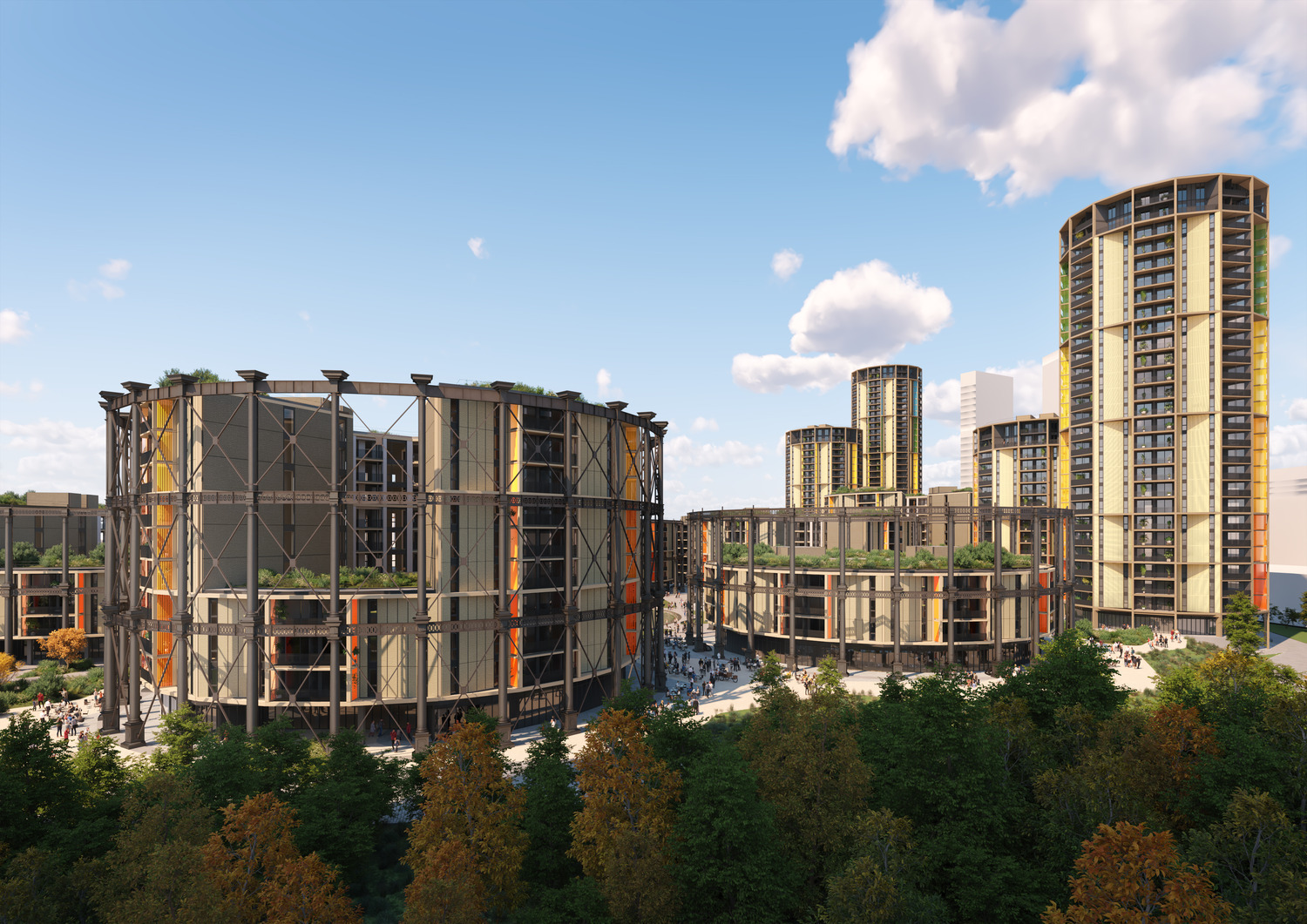Summary
The Bromley-by-Bow gasworks in East London is being redeveloped into a new neighbourhood with over 2,000 homes and a 4.2-acre riverside park. The project, led by St William, will transform the former industrial site while preserving its historic gasholder frames. Along with housing, the development will include commercial spaces, green areas, and public access for the first time in over 150 years. The plan aims to create a thriving community with jobs, shops, and leisure spaces while improving the local environment and economy. Construction is set to begin soon.
The Bromley-by-Bow gasworks site in East London is set to undergo a major transformation. Once an industrial hub, it will soon become a place to live and relax, with over 2,000 new homes and a 4.2-acre riverside park. This redevelopment is a big step in the wider regeneration of the area, bringing a mix of housing, public space, and green areas to what was once a closed-off industrial site.
Bromley-by-Bow Past
The gasworks at Bromley-by-Bow have been a part of East London for over a century. Built between 1872 and 1878, the site was once the largest of its kind in Europe. It housed seven massive gasholders made of cast iron. These structures are now listed for preservation, protecting them from demolition and ensuring the area’s history remains visible.
After the site stopped being used for gas storage in 2010, it sat vacant for several years. Now, the plans are in place to turn it into a new community while keeping the historical structures intact.
Bromley-by-Bow Gasworks New Plan
The redevelopment is being led by St William, a company known for turning brownfield sites into usable spaces. The project will include over 2,150 new homes, some of which will be housed within the gasholder frames themselves. This will preserve the look and feel of the original site while creating new living spaces. Along with the homes, there will be 30,000 square feet of commercial space, helping to boost the local economy and provide job opportunities.
This project is not just about building homes. The plan also focuses on creating public areas and green space. For the first time in over 150 years, the public will have access to the site. Around 70% of the area will be open space, with a large riverside park forming the centrepiece of the development.



Bromley-by-Bow Green Space and Community
The new riverside park will stretch across 4.2 acres along the River Lea. The park will include wildflower meadows, walking paths, and views of the river. This will offer a quiet space for residents and visitors to relax and enjoy nature. It will also improve the local environment, helping to increase biodiversity and offer a better quality of life for those living nearby.
In addition to the park, the project will include other green spaces, providing room for leisure and recreation. These areas will become key parts of the community, offering places for people to meet, exercise, or simply unwind. The creation of these public spaces is a major part of the development, giving something back to the community and improving the area for everyone.
Impact on Bromley-by-Bow Local Area
The new development is expected to have a strong impact on the local community. It will provide much-needed homes in an area that has grown rapidly in recent years. Along with housing, there will be new shops, restaurants, and other services, which will make the area more convenient for those living there.
The commercial spaces will help create jobs, and the public spaces will draw visitors. This could lead to more businesses opening in the area, bringing even more life to the community. The overall aim is to make the area a more connected and thriving place, where people want to live and work.
With planning permission now granted, the redevelopment is set to begin later this year. The transformation of the Bromley-by-Bow gasworks site shows how old industrial areas can be turned into vibrant new communities. It’s a reminder that even in a city as large as London, there is still room to adapt and change. By keeping some of the old while introducing new elements, the project hopes to create a space that works for both the past and the future.
